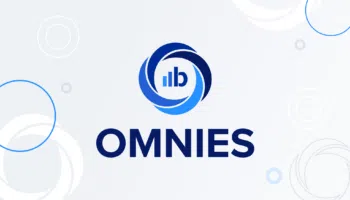Scale Customer Engagement with Our Smart Guide to Growth Marketing

DOWNLOAD THE SMART GUIDE TO GROWTH MARKETING
Learn strategies and tactics that make user acquisition, retention, and LTV skyrocket.
DEFINING GROWTH MARKETING
Drive Higher User Engagement
We find growth marketing at the intersection between product and marketing. Growth marketers drive higher user engagement with the product they are marketing by taking the product into various marketing channels.
As a growth marketer, you have to be customer-centric and implement a personalized, behavior-based marketing approach. Growth marketers rely on 1:1 marketing since they are highlighting relevant aspects of the product to their customers.
Growth marketing consists of systematic techniques and principles that marketers can apply across multiple experiences and products. It certainly makes use of digital marketing channels, but what distinguishes growth marketing is that it features relevant, targeted product-related content.
KEEPING CUSTOMERS ACTIVE
Customer Lifecycle Stages
It is important to bear in mind that growth relies upon understanding the customer’s lifecycle stage and prompting actions that would continue to keep the customer active.
Let’s take a closer look at these stages of the customer lifecycle:
Stage 1: New Customers
Customers form their first impressions and decide whether to continue engaging with your brand.
Stage 2: Activated Customers
Browsers into buyers or subscribers. Provide the right nudge to convert with value-add content.
Stage 3: Active Customers
Keep customer interest with fresh, relevant products and content. Give them a reason to continue to engage.
Stage 4: Passive Customers
Customer interest might plateau at times. It’s crucial for you to keep their interest to prevent churn.
Stage 5: Churned Customers
Try to win back customers by using insights to surface the right products, content, or promotions.
DRIVING CONTINUED ENGAGEMENT
Campaign Types for Each Lifecycle Stage
For each stage of the customer lifecycle, there are specific campaign types that you can implement to keep customers engaged.
These campaign types fall into three main categories:
Activation (for Stage 1)
Activation refers to the first moment when the user has fully experienced the product and derived value from it. It’s a critical stage, because users who don’t get activated quickly might never return since they didn’t experience the value of the product.
A great way to drive activation is by using a Welcome Series of emails and mobile notifications. By including elements about the product in your welcome emails and notifications, these series can be very effective.
Retention (for Stages 2 & 3)
User retention is about continuing to engage activated customers so that they stay active. More than any other stage, retention is vital to the long-term success of a brand. Growth marketers impact retention by building relevant and personalized customer experiences through all of their marketing channels on a 1:1 level, using powerful reminders and recommendations.
One effective type of reminder to help you drive customer retention is Status or Level in the Product, which refers to incomplete activity on their individual account. Abandoner Retargeting can also be a great tool for ongoing engagement beyond the initial activation.
Win-Back (for Stages 4 & 5)
Win-back is about users who were once active but have since lapsed and could be won back into becoming active customers. This is the hardest way to gain active users since these users potentially lapsed due to the product losing relevance for them. However, churn is a natural part of every business, and it is your duty as a growth marketer to build strategies that will bring back these lost users.
To bring back customers, go beyond generic messages and focus on the context of the user. A great way to do that is by including a personalized callout that’s more engaging and dynamic than a typical win-back email.
HOW DOES AI HELP YOU?
The Role of AI in Growth Marketing
The key elements of growth marketing are based on a deep understanding of customer preferences at a 1:1 level. This is where predictive AI comes in.
AI systems process large streams of data in real time and develop models that understand customer intent and preferences. For instance, machines can score users on their likelihood to purchase in the near term or churn, understand customer propensity towards various categories, balance content freshness with popularity, and recommend the next best content or product for every customer.
For example, User Intent Prediction is a top use case of AI in the realm of customer engagement. By using a predictive engine, you can build a model that separates the percentage of likely buyers from the rest of the users who are just browsing your website. These high-intent users are typically 2x more likely to respond to emails compared to others and yield 7-12x ROI from paid advertising like display retargeting.
HOW TO STRUCTURE THE TEAM
Building a Growth Marketing Organization
Different businesses may have varying requirements to successfully keep their customers engaged for the long term. Depending on the stage of your company and the maturity of different parts of your organization, you may have a unique way of organizing your teams.
Here are some of the most popular options:
Marketing-Oriented Growth Team
This structure refers to placing the growth team under the digital marketing leadership. The strength of this model is a strong alignment between marketing and brand messages. The challenge is around staffing the team with the right data science and product skills.
Product-Oriented Growth Team
This means placing the growth team within the product department. The advantage of this model is having strong product knowledge to shape a personalized experience. The challenge is to deliver a great brand experience and produce relevant creative assets.
Integrated Growth Team
Reporting to the CEO, this is potentially the strongest model — led by a versatile leader who has the necessary product, data, and marketing skills. The challenge is to find that rare leader who can manage such a multi-functional, integrated team.
Distributed Growth Team
In this model, the growth team consists of members from different functional teams like data science, marketing, and product, who come together around projects. This is not a good long-term option but might help you to get off the ground with growth marketing.
GROWING YOUR USER BASE
Download Our Smart Guide Now
Growth marketing is relevant for nearly every industry that has a digital presence and a significant amount of digital customer engagement.
Check out our data-driven best practices from the Smart Guide to Growth Marketing and discover the strategies and tactics that make user acquisition, retention, and LTV skyrocket.
If you’re interested in continuing your learning beyond customer engagement, you can discover our full library of Smart Guides here.


